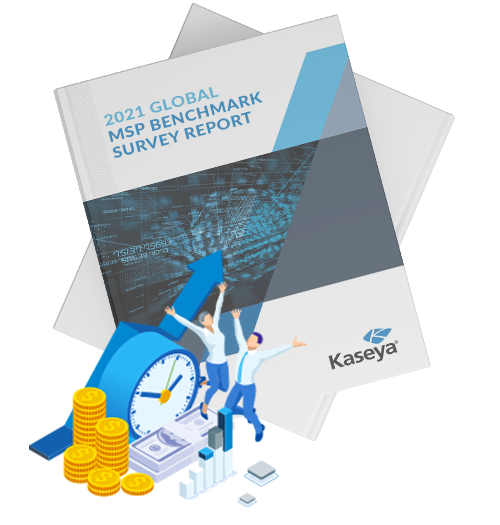MSPs: Kaseya report illustrates the need for your digital transformation
 Spring is in the air, and with it, the opportunity to wash away that COVID cabin fever with the great outdoors. In this spirit of new beginning, what does the future hold for MSPs?
Spring is in the air, and with it, the opportunity to wash away that COVID cabin fever with the great outdoors. In this spirit of new beginning, what does the future hold for MSPs?
It’s a timely question, considering that springtime also sees the release of Kaseya’s annual MSP Benchmark Survey Report.
Kaseya, like HyAlto, lives and breathes the MSP market. The company’s IT and security management solutions are used by tens of thousands of MSPs and small- to medium-sized businesses around the world.
The pandemic’s impact on IT spending patterns over the past year has been dramatic. According to Kaseya, the global managed services market was valued at US$152.05 billion in 2020 and is expected to reach US$274.20 billion by 2026.
Kaseya’s report is drawn from a December survey of 1,000 owners and technicians of MSP firms in over 50 countries. Supporting remote workforces, IT security, and business continuity and disaster recovery emerged as the top pain points for their clients.
The first stat that caught our attention is 54 per cent – the percentage of MSPs that reported their cloud management revenue had gone up in the past year. Meanwhile, infrastructure monitoring and management revenue rose for 52 per cent of them.
Demand for cloud services jumped in hand with cyberattacks. That leads to the next big datapoint – 65 per cent of MSPs reported that security services revenue had gone up in the past 12 months.
Is cloud opportunity within your reach?
With all this change in service demand, 83 per cent of MSPs reported that they believe the integration of core applications, such as RMM and professional services automation (PSA), helps their organizations drive better bottom-line results.
We wholeheartedly agree. In fact, we stake our business on delivering that very capability. It’s also fundamental to addressing the top business challenge identified by Kaseya’s respondents – acquiring more customers.
Other problem areas identified by these MSPs:
- Meeting audit and compliance requirements (the accurate billing we enable directly contributes to this)
- Managing public cloud adoption/migration and support (again, our multi-tenanted platform delivers the private cloud integration, automated usage monitoring and self-serve convenience to ease the headaches)
- Digital transformation (it pretty much goes without saying that this is HyAlto’s middle name … if we had a last name)
Kaseya’s report then dove into growth opportunities for MSPs post pandemic. It’s a thin line between what represents an opportunity or a challenge, depending on the adaptability and capacity of an MSP’s operations. We see the same items popping up here as above, including cloud migration and digital transformation.
Out with the old
As illustrated by a busy chart on Page 10 of Kaseya’s report, MSPs continue to be all over the map when it comes what services they offer, how they deliver and how they bill.
This ranges from simple break/fix, to BCDR, DevOps, security, old school hardware/software resale, managed services, private cloud, project-based and public cloud. Kaseya found that most individual services represent less than 11 per cent of total revenue for the majority of MSPs.
Meanwhile, there are clear and obvious trends at play that demonstrate a strong future in delivering some combination of cloud services through a flexible monthly recurring revenue (MRR) model. The question any MSP continues to face is how much it should cling to its old way of doing business versus committing to the future.
Don’t take our word for it. Ninety-one per cent of Kaseya’s survey respondents said it was somewhat or very important to them to add new service offerings for clients. About 70 per cent consider IT management platform integration to be critical or very important to improving their operational efficiency.
But as Kaseya concludes, none of this is possible without investing in the right management platform that will improve efficiency and reduce costs. This is the first and most crucial step to be able to serve more clients, and to offer new services.






